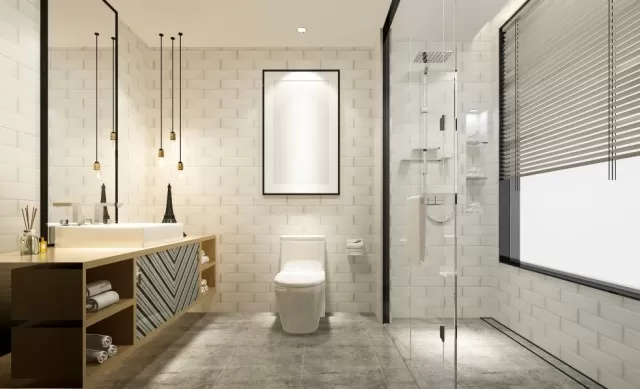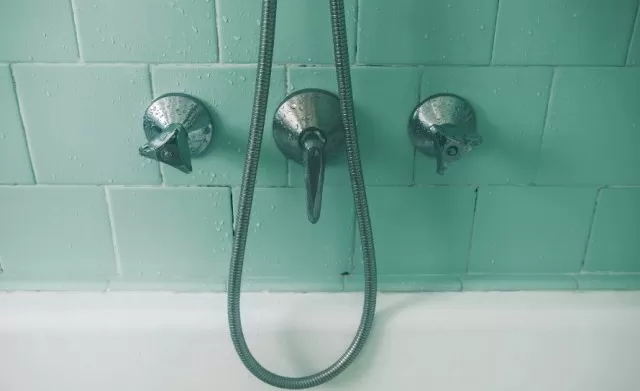Cleaning Mold from bathroom tiles can be effectively done using either vinegar or a borax solution.
How to Clean Mold from Bathroom Tiles

For smaller cleaning tasks, you can create a solution by mixing 2 tablespoons of borax into 2 cups of warm water, which can then be funneled into a spray bottle.
Spray this solution onto the moldy tiles and allow it to sit for a few minutes. Alternatively, for larger cleaning jobs, you can prepare a larger batch of cleaning solution with 1 cup of borax mixed into 1 gallon of warm water.
Use a mop or sponge to scrub away the mold. Whether you choose vinegar or borax, there’s no need to rinse the solution.
However, it’s essential to dry the surface to prevent the mold from returning due to excess moisture.
To address mold in bathroom tile grout, you can utilize the same borax or vinegar solution mentioned earlier.
Apply this solution directly to the grout lines and let it sit for a while. Then, use a toothbrush or a small bristle brush to scrub away the mold.
For stubborn stains, you can create a paste by mixing two parts baking soda with one part vinegar. Apply this paste to the grout and allow it to sit for a few minutes before scrubbing away the mold.
If preferred, you can also use a commercial grout cleaner.
It’s crucial to check the type of tile material you have before using these cleaning solutions, as vinegar may be damaging to certain tile materials such as marble, slate, granite, or stone tiles.
To prevent mold growth in the bathroom, consider these preventive measures:.
Eliminate excess moisture by running an exhaust fan for at least 30 minutes after a shower.
Squeegee shower walls daily after use to reduce water accumulation in the bathroom.
Keep the bathroom floor dry and promptly remove damp towels.
Regularly disinfect the bathroom to prevent mold from becoming a recurring issue.
You can follow a bathroom cleaning checklist for a comprehensive cleaning routine.
cleaning bathroom mold

Cleaning bathroom mold can be accomplished with various products and methods, but safety precautions should always be followed.
Here are some effective cleaning solutions for tackling bathroom mold:.
Soap and Water: In many cases, a mixture of soap and water, along with some elbow grease, is sufficient to remove bathroom mold.
This method is straightforward and requires no special products. However, it’s essential to wear gloves and work in a well-ventilated area when cleaning mold.
Wearing a mask is also recommended to prevent inhaling mold spores that may become airborne during cleaning.
Borax: Borax, a natural mineral powder, is an effective way to clean bathroom mold.
Mix 1 cup of borax with 1 gallon of warm water. Transfer some of this solution to a spray bottle and apply it directly to the mold-affected surface.
Use a scrub brush, sponge, or clean rag to remove mold stains. The remaining borax solution can be used to mop tile or vinyl floors.
Bleach: Bleach can be used to remove mold stains in the bathroom, but it should only be used in well-ventilated areas.
Ensure there is proper ventilation, such as opening a window or running the bathroom exhaust fan when working with bleach. A 1:10 bleach-to-water solution is effective on nonporous surfaces like sinks, tubs, toilets, and showers.
However, it should not be used on mold growing on the ceiling or walls.
Distilled White Vinegar: Diluted white vinegar is a useful solution for cleaning bathroom mold.
You can use it to clean tile floors or apply it directly to your showerhead, drain, or toilet. Spray undiluted white vinegar directly on the mold-affected area, let it sit for 5–10 minutes, then wipe it away with a sponge or rag.
For stubborn mold, use a bristle brush for scrubbing.
Cleaning Mold

Cleaning Mold from Bathroom Ceiling:.
If you notice mold on your bathroom ceiling, it’s essential to identify and address the source of the problem.
If there is a leak from above, fix the leak before tackling the mold. If the mold is due to bathroom moisture, consider improving ventilation, such as installing an exhaust fan or using a dehumidifier to reduce humidity.
To clean mold from the bathroom ceiling, you can use the vinegar solution mentioned earlier.
If the ceiling’s surface allows scrubbing, spray the vinegar directly on the ceiling and wipe with a clean rag. For surfaces that cannot be scrubbed, the affected area may need to be removed and replaced.
Removing mold from textured ceilings should be left to professionals who have the necessary protective equipment and expertise.
Cleaning Mold off Bathroom Walls:.
To clean mold off bathroom walls, use a solution of soap and water or vinegar in a spray bottle.
If your walls are paint-finished and can be scrubbed, apply vinegar directly to the mold and scrub it away. Afterward, allow the area to dry, and then cover it with stain-blocking paint.
For tiled bathroom walls, follow the cleaning instructions in the subsequent section.
If the mold has penetrated the drywall extensively or has spread across the entire wall, it’s best to hire a professional for removal.
Disturbing a large amount of mold could pose health risks and may lead to it spreading to other parts of your home.
*The information is for reference only.